
Overview
The article highlights essential optimization techniques that can dramatically boost the performance of direct-to-consumer (DTC) brands. It asserts the necessity of a data-driven approach, showcasing compelling case studies and specific strategies—such as gamification, A/B testing, and strategic link building—that have proven effective in increasing conversion rates, average order values, and overall profitability for DTC companies.
By leveraging these techniques, brands can not only enhance their operational efficiency but also create a more engaging customer experience. For instance, gamification has been shown to increase user interaction, while A/B testing allows brands to refine their messaging and offers based on real-time data. These strategies are not just theoretical; they are backed by successful implementations that demonstrate tangible results.
In conclusion, adopting a data-driven mindset and implementing these optimization techniques can lead to significant improvements in performance metrics. DTC brands that embrace these strategies will find themselves better positioned to thrive in a competitive marketplace.
Introduction
In the dynamic realm of direct-to-consumer (DTC) brands, optimizing performance is not just beneficial; it’s essential for thriving rather than merely surviving. Companies are increasingly adopting innovative techniques that not only boost conversion rates but also promote sustainable growth without inflating advertising costs. Yet, as competition intensifies, how can brands effectively navigate the vast array of optimization strategies at their disposal? This article explores ten powerful techniques designed to elevate DTC brand performance, providing businesses with actionable insights to fully realize their potential.
Parah Group: Data-Driven Strategies for Conversion Rate Optimization
Parah Group employs a comprehensive data-driven approach that meticulously analyzes user behavior and market trends to guide its optimization efforts. This method is not just about numbers; it’s about understanding the very essence of consumer interaction. By utilizing advanced tools such as user session recordings and competitor analysis, the agency pinpoints critical areas for enhancement. This approach not only boosts sales outcomes but also raises average order values (AOV), enabling DTC companies to achieve sustainable growth without incurring extra advertising expenses.
Consider the case of a $30M clothing label that experienced a remarkable 35% boost in conversion rates and a 10% increase in revenue per visitor after adopting innovative strategies like:
- Gamifying the progress bar for free shipping limits
- Introducing post-purchase upsells
Similarly, Grab Green, a $15M cleaning product label, enhanced its AOV by an impressive 80% through the introduction of bundles and multi-packs. These examples underscore the effectiveness of customized approaches tailored to specific market needs.
Understanding consumer psychology is pivotal in this process. It allows for the development of strategies that resonate with target audiences, ultimately driving increased engagement and sales. Recent trends indicate that companies focusing on holistic experience optimization and human-centered design are better positioned to meet evolving consumer expectations. This further underscores the significance of utilizing techniques of optimization through a data-informed approach in today’s competitive landscape.
To enhance your conversion rates, consider implementing:
- Gamification techniques
- Personalized upsell offers tailored to your customers' shopping behaviors
These actionable insights can transform your approach and lead to substantial growth.

BUD Technique: Identify Bottlenecks, Unnecessary Work, and Duplicated Efforts
The BUD technique stands as a cornerstone for enhancing operational efficiency in DTC companies, focusing on three critical areas:
- Bottlenecks
- Unnecessary work
- Duplicated efforts
By conducting a thorough analysis of existing processes, companies can pinpoint where delays occur and eliminate superfluous tasks. This strategic approach not only streamlines operations but also utilizes techniques of optimization to enhance resource allocation, empowering teams to concentrate on high-impact activities.
Experts strongly advocate for regular workflow reviews and fostering a culture of continuous improvement. This ensures that optimization initiatives consistently align with broader business objectives. By utilizing techniques of optimization, addressing these key areas allows companies to significantly boost their performance and profitability. In fact, industry insights reveal that resolving bottlenecks can lead to a remarkable 20% increase in operational efficiency, ultimately enhancing customer satisfaction and loyalty.
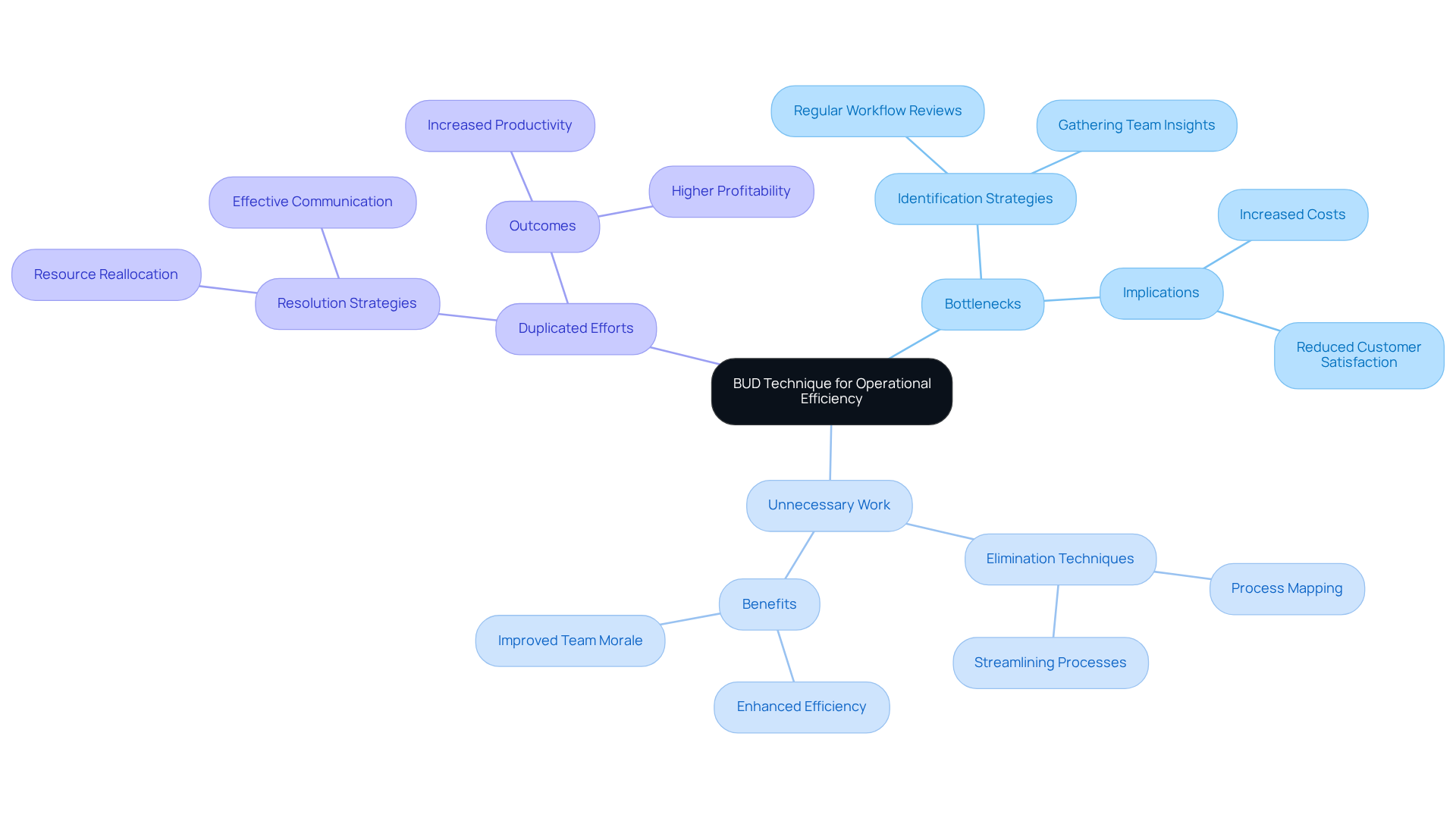
DIY Technique: Implement Do-It-Yourself Solutions for Optimization
The DIY technique empowers businesses to craft and implement their own techniques of optimization, cultivating a culture of creativity and rapid iteration. By leveraging tools like A/B testing and customer surveys, companies can gather invaluable feedback that informs their decision-making processes. A/B testing, in particular, stands out as a cornerstone of conversion optimization, enabling businesses to compare different versions of their marketing elements and identify what resonates most with their audience. Notably, successful DTC companies have reported significant advancements in key metrics, including a 20-40% increase in click-through rates and a 15-30% improvement in return on ad spend through systematic A/B testing.
To maximize the effectiveness of these strategies, it is essential for teams to be well-versed in fundamental CRO principles. This training empowers them to spot opportunities for improvement and act decisively, ultimately boosting overall performance. Best practices encompass:
- Defining clear objectives for each test
- Isolating one variable at a time
- Maintaining rigorous tracking hygiene to validate results
Furthermore, Parah Group underscores the necessity of aligning paid ads with landing pages to ensure a seamless customer journey. By adopting a systematic approach to A/B testing and actively engaging with customer feedback, companies can continuously refine their strategies, paving the way for sustainable growth and enhanced conversion rates. For practical insights, organizations should conduct regular review sessions to analyze test outcomes and adjust their approaches accordingly.
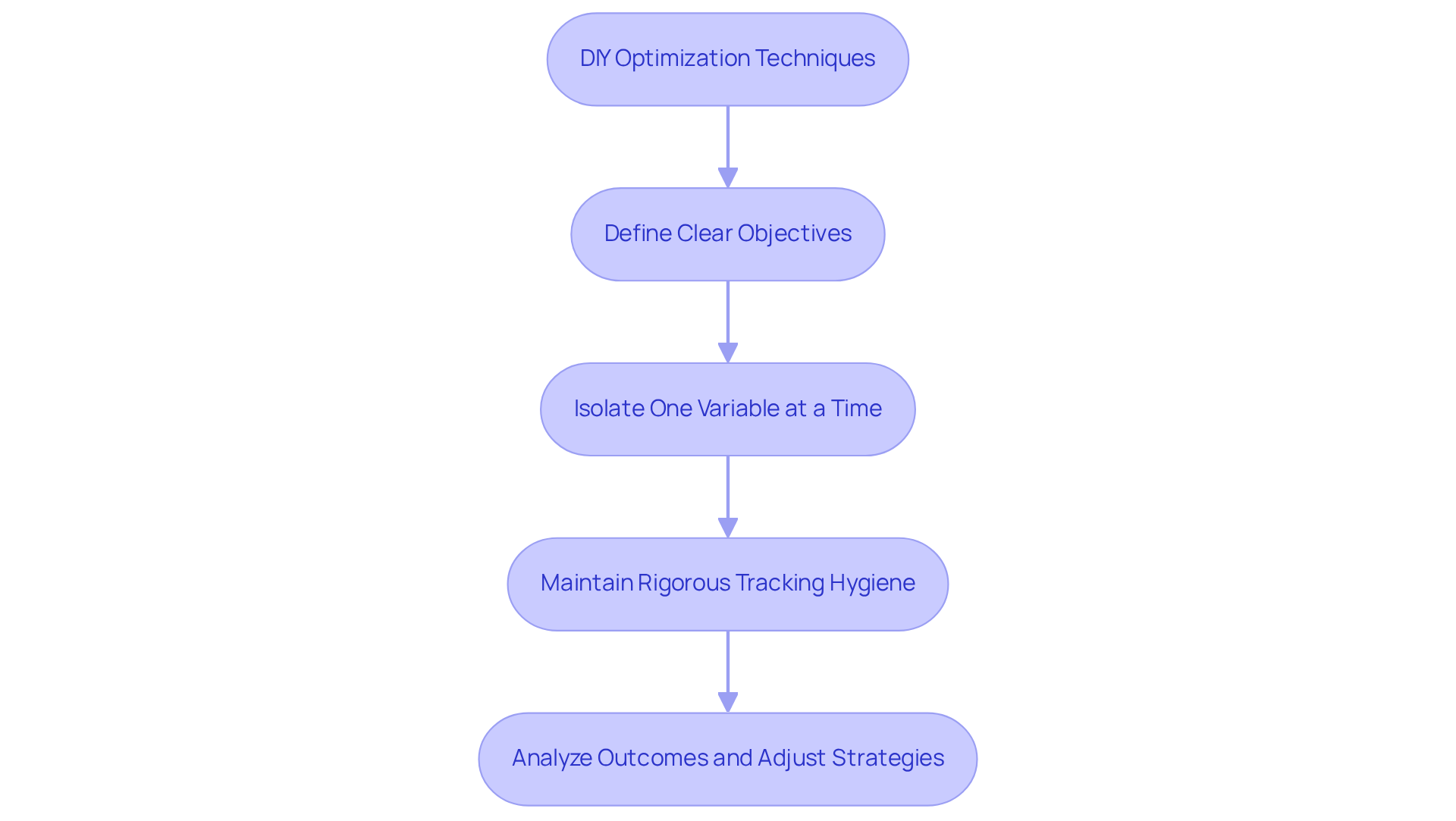
Simplify and Generalize: Streamline Processes for Enhanced Efficiency
To enhance efficiency, companies must simplify and generalize their processes. This means breaking down complex tasks into manageable steps and eliminating unnecessary procedures. By creating standardized workflows, teams can work more cohesively and respond to challenges effectively. Regular training sessions are essential; they ensure that all team members align with these streamlined processes, fostering a culture of efficiency and collaboration.
Consider this: organizations that implement standardized workflows see a significant increase in productivity. According to industry studies, companies that prioritize process simplification report up to a 30% improvement in operational efficiency. This is not just a trend; it’s a proven strategy that drives results.
To take action, leaders should prioritize the establishment of clear, standardized workflows. This involves not only training but also continuous evaluation of processes to identify areas for improvement. By doing so, companies can cultivate an environment where efficiency thrives, and collaboration becomes second nature.

Base Case Technique: Establish a Foundation for Performance Improvement
The Base Case technique stands as a cornerstone for establishing a robust benchmark for performance metrics prior to implementing any techniques of optimization. This foundational approach empowers companies to accurately evaluate the effectiveness of their initiatives. By diligently monitoring essential performance indicators (KPIs) such as transformation metrics and average order value (AOV), organizations can effectively gauge the impact of their modifications.
For instance, Parah Group has successfully aided various DTC companies, including a $30M apparel label, by redesigning their homepage and optimizing product pricing. This strategic intervention led to a remarkable 35% increase in conversion rates and a 10% rise in revenue per visitor. Experts like Leon Lau emphasize that benchmarking insights are crucial for steering strategic decisions, enabling companies to pinpoint areas where they may be underperforming.
Moreover, Glenn Dunlap underscores the importance of setting realistic goals and consistently reviewing performance against the established base case. This practice is vital for fostering continuous improvement. Such an approach not only clarifies the techniques of optimization but also ensures that companies remain competitive in a rapidly evolving market.

Data Structure Brainstorm: Optimize Information Management for Better Insights
The Data Structure Brainstorm technique underscores the critical importance of effectively organizing and accessing information within a company. A well-implemented structured data management system ensures that vital insights are not just stored but are readily retrievable and actionable. By categorizing data based on relevance and usability, teams can swiftly identify trends and seize techniques of optimization.
Investing in robust data management tools is not merely beneficial; it is essential. Such tools streamline the data retrieval process and significantly enhance decision-making capabilities. Research shows that companies leveraging structured data systems see a remarkable uplift in performance metrics. In fact, data-driven organizations are six times more likely to retain customers and can achieve up to a 20% increase in revenue.
By prioritizing structured data management, DTC companies can unlock valuable insights that drive growth and profitability. This strategic approach not only positions them for success but also empowers them to make informed decisions that propel their business forward.
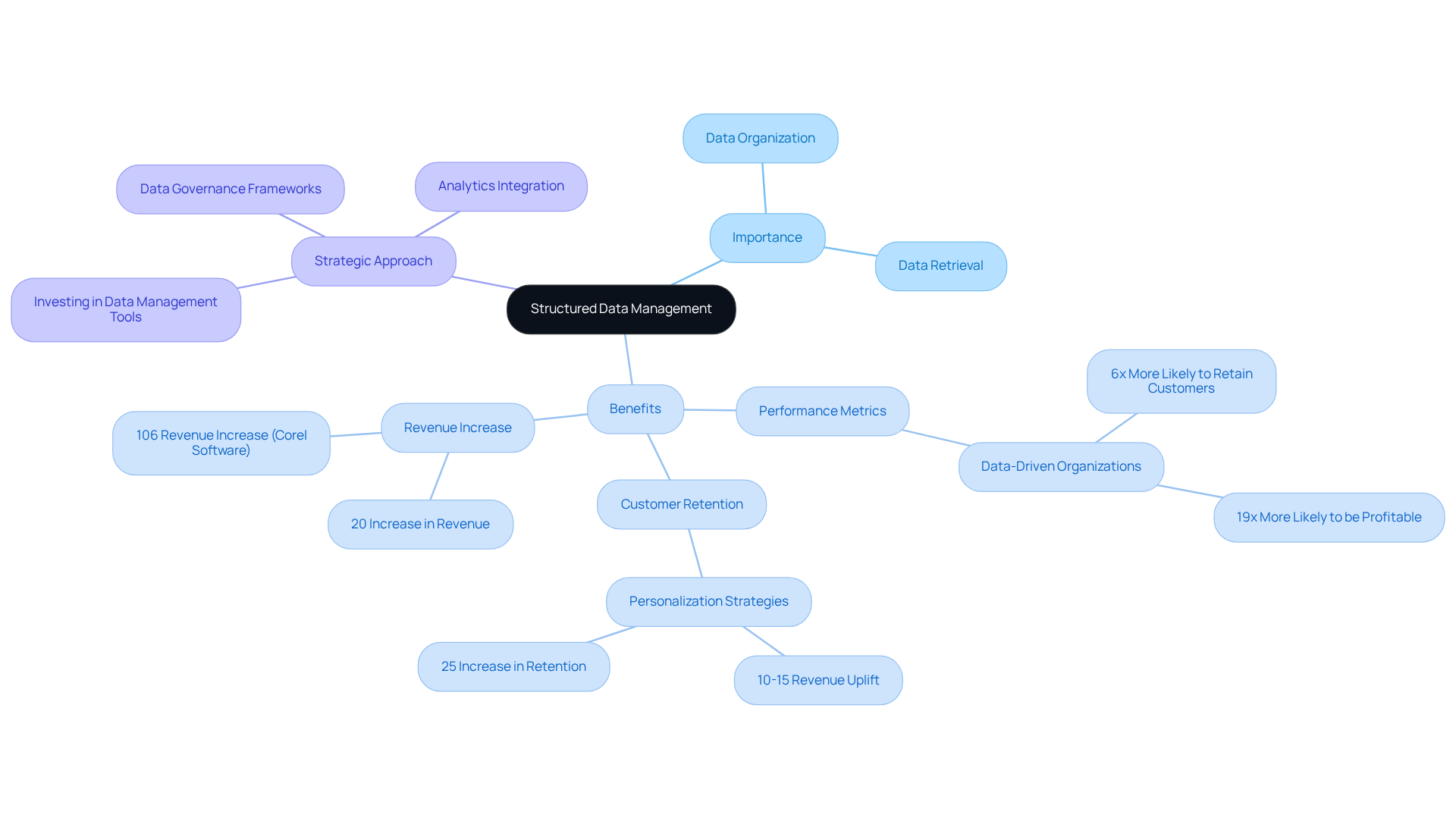
Technical Optimization: Enhance Site Structure for Improved SEO Performance
Techniques of optimization are crucial for refining a website's structure, significantly impacting both SEO performance and user experience. Key elements include optimizing page load speeds, ensuring mobile responsiveness, and implementing intuitive navigation paths. Research shows that 53% of users abandon a website if it takes more than three seconds to load, underscoring the urgency of addressing these technical aspects. Moreover, sites that load in one second can expect conversion rates to soar, with a potential increase of 39% in sales for every 1,000 visitors.
In the realm of Conversion Rate Optimization (CRO), the techniques of optimization extend beyond mere performance improvements; they are vital for maximizing profitability and ensuring sustainable growth for direct-to-consumer companies. By aligning techniques of optimization with a comprehensive CRO strategy, companies can create a seamless user experience that not only attracts visitors but also converts them into loyal customers. To enhance visibility in search engine results, companies must prioritize mobile optimization, as over 70% of websites are now indexed mobile-first. This shift highlights the necessity for a responsive design that caters to users across various devices.
Actionable Tips for Technical Optimization:
- Conduct regular technical audits to identify areas needing improvement.
- Optimize images and other media to improve load times.
- Implement a content delivery network (CDN) to enhance site speed.
- Ensure that all elements of the site are mobile-friendly and responsive.
Expert opinions emphasize that conducting regular technical audits is essential for pinpointing areas needing improvement, ensuring that the site remains competitive in the ever-evolving digital landscape. By focusing on these technical elements, DTC companies can effectively utilize their existing resources, driving significant growth and higher conversion rates.
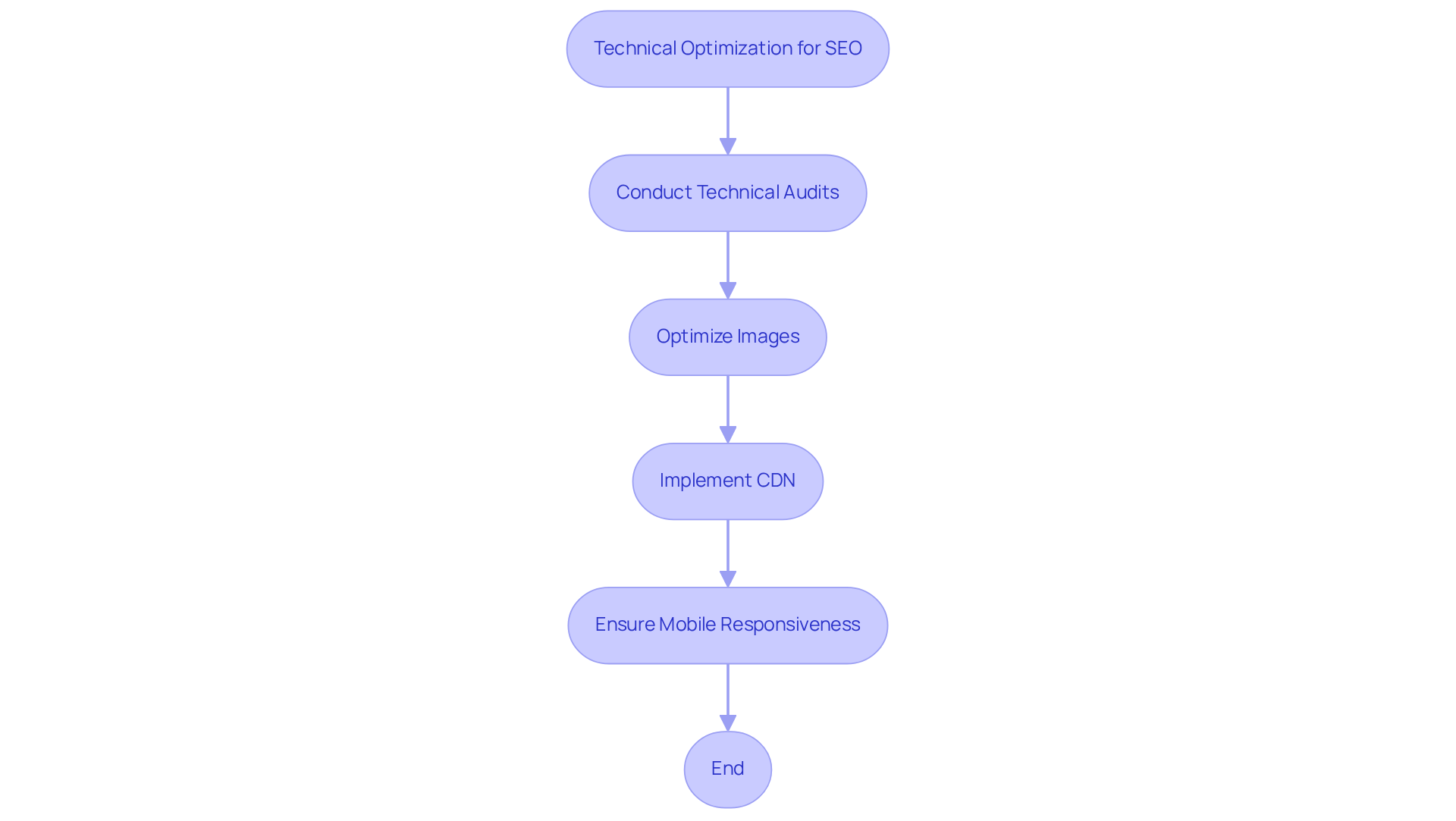
Engaging Content Creation: Develop High-Quality Content to Drive Engagement
Producing captivating content is essential for attracting potential customers and fostering interaction with your company. High-quality, relevant content that resonates with your target audience is key. Storytelling is vital in this process, allowing companies to craft engaging narratives that connect emotionally with consumers. By incorporating visuals, these stories become even more memorable and impactful.
Addressing customer pain points is paramount; effective content should not only inform but also offer solutions that align with the audience's needs. Research indicates that high-quality content significantly boosts customer engagement metrics. Companies that prioritize storytelling report greater success in achieving their goals. For example, 89% of marketers affirm that storytelling enhances user understanding of products, which leads to increased engagement.
Consider the case studies from Parah Group, which illustrate how techniques of optimization in strategic content and conversion rate optimization (CRO) initiatives can dramatically improve engagement and profitability. A $30M clothing brand saw a 35% increase in sales effectiveness after revamping their homepage to highlight social proof and testimonials. Similarly, a $15M cleaning product brand raised their average order value by 80% through targeted content strategies and bundling deals. These examples clearly demonstrate how effective content creation directly contributes to better business outcomes.
Experts recommend leveraging customer feedback to continuously refine content strategies. This iterative approach ensures that messaging stays aligned with audience expectations, ultimately driving conversions. By focusing on storytelling and high-quality content, direct-to-consumer (DTC) companies can cultivate a more engaging experience that fosters loyalty and encourages repeat business.

Strategic Link Building: Enhance Content Authority through Effective Linking
Strategic link building is essential for establishing a robust network of relevant and authoritative links that significantly enhance the credibility of a company's content. By leveraging techniques of optimization, such as:
- Guest blogging
- Forming partnerships
- Engaging in outreach efforts with industry influencers
Businesses can effectively bolster their content authority. This, in turn, leads to improved search engine rankings and an increase in organic traffic to their websites.
The emphasis here is on quality over quantity. Companies should prioritize forming meaningful connections within their industry rather than merely accumulating links. This strategic approach not only fosters trust but also positions businesses as leaders in their field. As experts in the industry highlight, cultivating these high-quality relationships is crucial for long-term success in digital marketing.
In conclusion, businesses must recognize the significance of techniques of optimization, particularly strategic link building, as a vital component of their online presence. By focusing on quality links and nurturing valuable connections, they can enhance their credibility, improve search visibility, and ultimately drive more traffic to their sites.
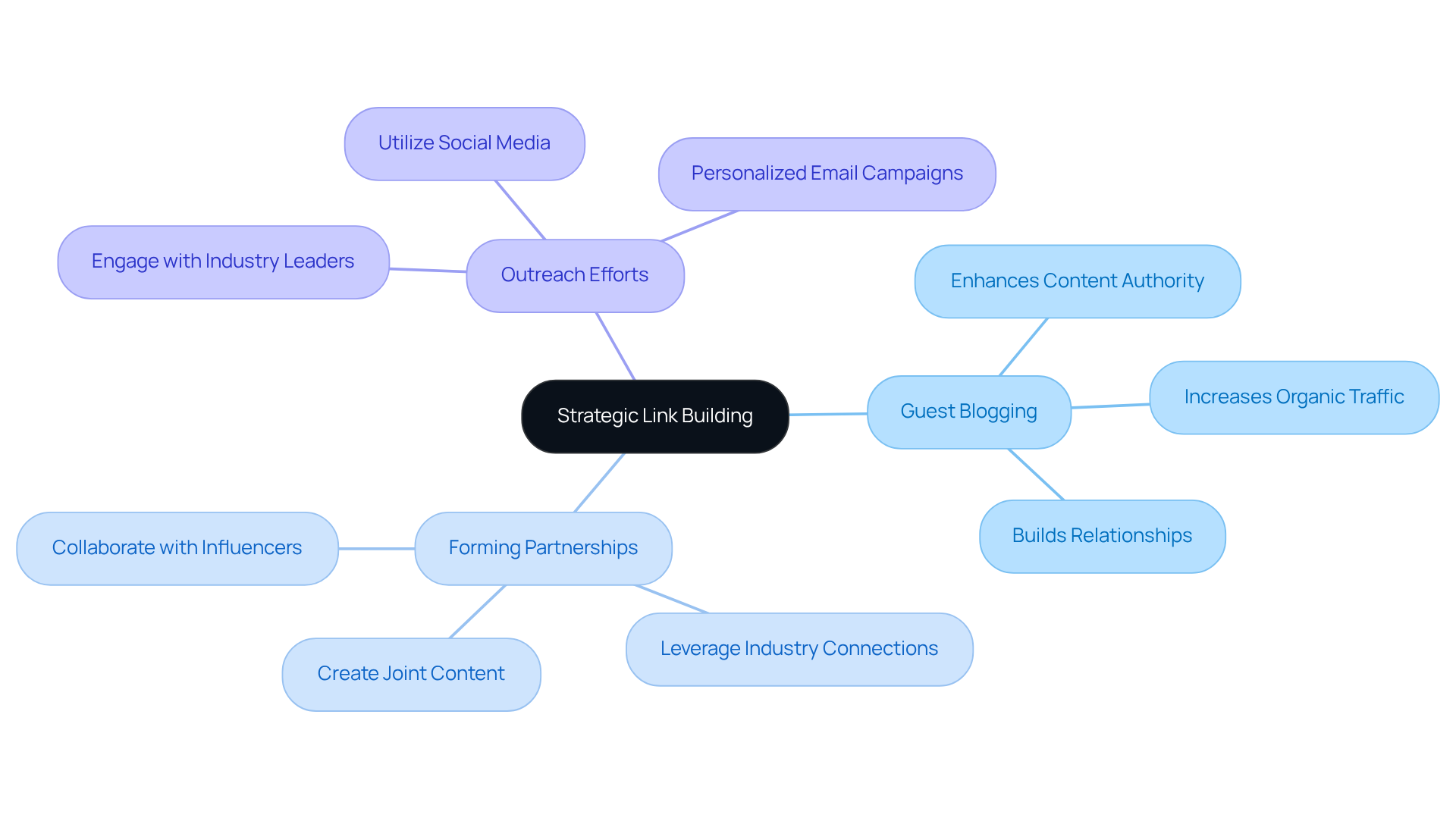
KPI Measurement: Track Key Metrics for Continuous Optimization Success
KPI measurement serves as a cornerstone of any techniques of optimization plan, empowering companies to monitor their progress and make informed decisions. Key metrics such as conversion rates, average order values, and customer acquisition costs are essential to track. By consistently reviewing these KPIs, brands can utilize techniques of optimization to uncover trends and pinpoint areas for improvement, allowing them to refine their strategies effectively.
Parah Group underscores the significance of a data-driven approach, advocating for the implementation of automated reporting systems to streamline this process. This strategy ensures that teams have access to real-time data, which is crucial for facilitating the success of techniques of optimization. Ultimately, this leads to maximized profitability through informed decision-making.

Conclusion
Techniques of optimization are essential for enhancing the performance of direct-to-consumer (DTC) brands. By implementing a variety of strategies—from data-driven approaches to effective content creation—companies can significantly boost their conversion rates, operational efficiency, and overall profitability. Tailored optimization techniques pave the way for sustainable growth, enabling businesses to thrive in a competitive landscape.
Understanding consumer psychology is crucial. Employing gamification and personalized upsell offers can engage customers more effectively. Additionally, utilizing the BUD technique helps identify and eliminate bottlenecks in the sales process. Structured data management, technical optimization for improved SEO, and engaging content creation are vital components that drive customer engagement and retention. Case studies demonstrate how these strategies have yielded impressive results, reinforcing the necessity of a comprehensive approach to optimization for success.
DTC brands must recognize the powerful impact of optimization techniques and take actionable steps to implement them. By focusing on continuous improvement and leveraging data-driven insights, companies can enhance their performance and build lasting relationships with their customers. Embracing these strategies will not only foster sustained growth but also provide a competitive edge in an ever-evolving market.
Frequently Asked Questions
What is the data-driven approach employed by Parah Group for conversion rate optimization?
Parah Group uses a comprehensive data-driven approach that analyzes user behavior and market trends to guide optimization efforts, focusing on understanding consumer interaction rather than just numbers.
What tools does Parah Group utilize for optimization?
The agency employs advanced tools such as user session recordings and competitor analysis to identify critical areas for enhancement.
Can you provide examples of companies that benefited from Parah Group's strategies?
A $30M clothing label achieved a 35% boost in conversion rates and a 10% increase in revenue per visitor by gamifying the progress bar for free shipping limits and introducing post-purchase upsells. Similarly, Grab Green, a $15M cleaning product label, enhanced its average order value (AOV) by 80% through bundles and multi-packs.
Why is understanding consumer psychology important in optimization?
Understanding consumer psychology helps develop strategies that resonate with target audiences, driving increased engagement and sales.
What recent trends are influencing conversion rate optimization?
Companies focusing on holistic experience optimization and human-centered design are better positioned to meet evolving consumer expectations.
What actionable insights does Parah Group suggest for enhancing conversion rates?
Suggested strategies include implementing gamification techniques and personalized upsell offers tailored to customers' shopping behaviors.
What is the BUD technique and its purpose?
The BUD technique focuses on identifying bottlenecks, unnecessary work, and duplicated efforts in operational processes to enhance efficiency in DTC companies.
How can companies benefit from resolving bottlenecks?
Addressing bottlenecks can lead to a significant increase in operational efficiency, with industry insights indicating a potential 20% improvement, which enhances customer satisfaction and loyalty.
What is the DIY technique in the context of optimization?
The DIY technique encourages businesses to create and implement their own optimization strategies, fostering creativity and rapid iteration through tools like A/B testing and customer surveys.
What are the benefits of A/B testing for DTC companies?
Successful DTC companies have reported a 20-40% increase in click-through rates and a 15-30% improvement in return on ad spend through systematic A/B testing.
What best practices should teams follow when conducting A/B testing?
Best practices include defining clear objectives for each test, isolating one variable at a time, and maintaining rigorous tracking hygiene to validate results.
How important is aligning paid ads with landing pages?
Aligning paid ads with landing pages is crucial to ensure a seamless customer journey, which contributes to effective conversion rate optimization.
FAQs











